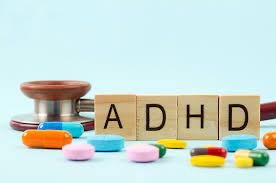The diagnosis of Attention Deficit Hyperactivity Disorder (ADHD) is frequently associated with unfavorable outcomes, highlighting difficulties with impulse control and focus. But more people are realizing that people with ADHD have special cognitive skills and creative qualities that can be used to their advantage. In order to better understand how people with ADHD might use their unique characteristics to succeed in creative efforts, this article examines the connection between ADHD and creativity.
Knowing About ADHD and Its Features
ADHD is a neurodevelopmental disease marked by impulsivity, hyperactivity, and trouble paying attention. Although these characteristics can present difficulties in specific situations, they also contribute to an alternative cognitive style that fosters creativity in a variety of ways.
Divergent Thinking:
People with ADHD are frequently quite good at this type of thinking, which entails coming up with original ideas by considering a wide range of options. Their ability to think creatively and form unexpected connections can result in novel approaches in creative domains including writing, music, painting, and problem-solving.
Hyperfocus:
Despite the common misconception that people with ADHD are often easily distracted, hyperfocus is characterized by intense focus on a highly interesting or exciting task. They exhibit extraordinary creativity and productivity when hyper focused, frequently resulting in exceptionally high-caliber work.
Impulsivity and Risk-Taking:
Although impulsivity can be harmful in certain circumstances, it also encourages a risk-taking and open-minded attitude that is essential for creativity. This unafraid approach to testing out novel ideas can result in innovations and ground-breaking discoveries.
Using Creative Activities to Benefit from ADHD Traits
There are many ways that creativity can appear, and people with ADHD can use their special cognitive abilities to their advantage when they are trying to be creative.
Accept Hyperfocus:
Acknowledge the situations or activities that cause hyperfocus and make the most of them. Get involved in things that capture your interest and let creativity flow, whether it’s writing, painting, or making music.
Use Divergent Thinking:
Conduct a thorough brainstorming session and investigate several viewpoints. People with ADHD are frequently excellent at coming up with several ideas quickly. Make notes about these concepts in journals, mind maps, or digital tools so you may come back to them later.
Transform surplus Energy into Productivity:
Moving around and engaging in physical activity can assist transform surplus energy into productivity by facilitating focus on creative projects. Include stretches or movements into your work hours to help you stay focused and creative.
Establish a Supportive Workspace:
Arrange your desk to reduce noise and enhance creativity. Try utilizing noise-canceling headphones or varying organizing tactics to establish a setting that encourages creative flow.
Artistic Expression and ADHD
People with ADHD can naturally express their creativity and use the arts as a positive outlet for their energy.
Visual Arts:
Since they can freely explore colors, forms, and textures in this medium, many artists with ADHD thrive in it. The impulsiveness and expressiveness of art forms like painting, sculpture, or photography complement ADHD characteristics and foster unbridled creativity.
Music and Performing Arts:
Because ADHD people may hyperfocus during preparations or performances, they frequently succeed in these fields. Performers such as musicians, actors, and dancers use their acute focus to create dramatic and moving shows.
Writing and Literature:
People with ADHD often have a talent for creative writing as well as great storytelling skills. Their inclination toward divergent thinking makes it easy for them to create gripping stories, deepen characters, and experiment with a variety of genres.
ADHD Management Issues and Techniques for Creative Activities
Although ADHD fosters creativity, it can also bring up difficulties that must be carefully managed in order to maximize creative production.
Time management:
People with ADHD may have trouble organizing and perceiving time. To efficiently arrange creative sessions and sustain momentum without feeling overwhelmed, use clocks, timetables, and reminders.
Distraction Management:
Reduce distractions by designating a specific area for work, utilizing noise-canceling headphones, or implementing methods that improve focus, including the Pomodoro Technique (working in short bursts of time interspersed with brief breaks).
Self-Care and Well-Being:
To enhance cognitive function and creative output, give priority to self-care activities like getting enough sleep, exercising frequently, and eating a balanced diet. Additionally helpful for reducing stress and improving focus are mindfulness practices and meditation.
ADHD, Originality, and Achievement in the Workplace
Many prosperous people in the creative sectors credit their success to the good features of ADHD that support their creative vision and inventive thinking.
Innovation and Originality:
People with ADHD frequently approach creative tasks from novel angles and with unusual ideas, which sets them apart in crowded fields.
Adaptability and Problem-Solving:
In fast-paced fields like technology, design, and advertising, the capacity to think quickly, adjust to changes, and solve issues creatively is highly valued.
Passion and Persistence:
When it comes to pursuing their creative goals, overcoming obstacles, and retaining enthusiasm for their work, people with ADHD frequently show strong passion and persistence.
In summary
The features of ADHD contribute to a distinct cognitive style that fosters creativity and innovation, and there is a close relationship between ADHD and creativity. With the right knowledge and skills, people with ADHD can use their creative abilities to succeed in a variety of artistic mediums as well as in the workplace. Accepting the range of cognitive styles promotes a more diverse and inclusive creative environment where people with ADHD can flourish and provide their unique viewpoints to the field.
In conclusion, ADHD is more than just a set of difficulties; it’s also a creative and innovative resource that is just waiting to be discovered. We can foster a more accepting atmosphere where people with ADHD can thrive artistically and use their artistic endeavors to meaningfully contribute to society by identifying and fostering these special skills.
